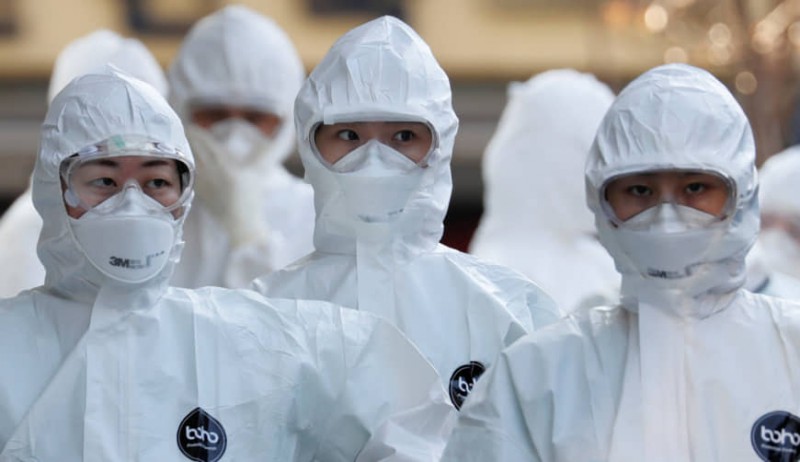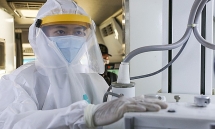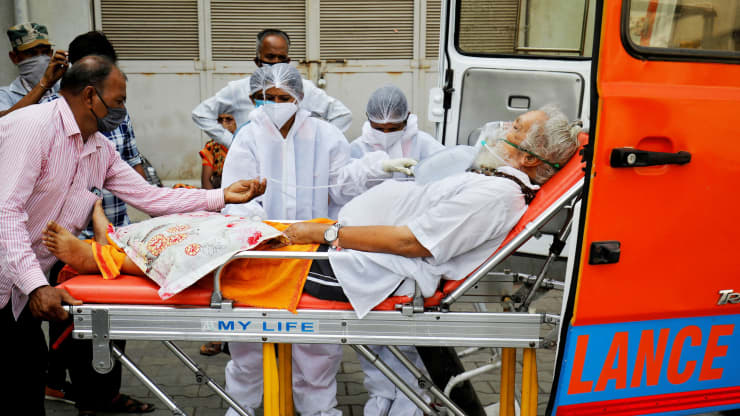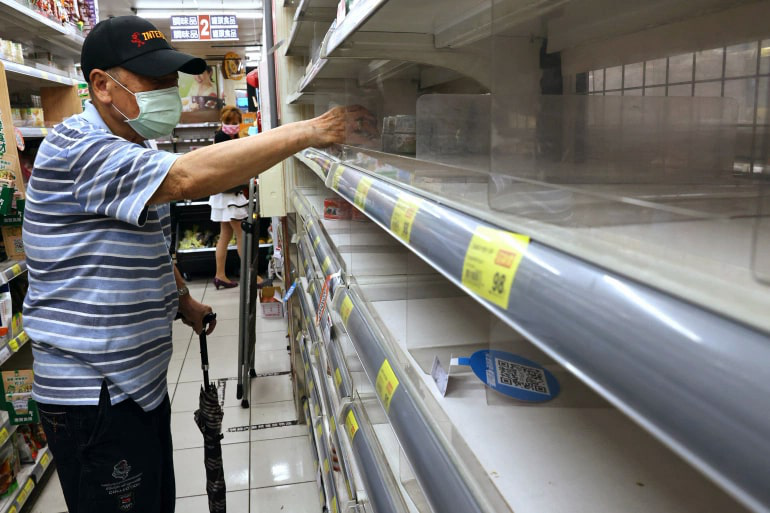Latest on coronavirus: How the virus kills
| Baby girl born in COVID-19 quarantine zone | |
| All of Italy to be placed under lockdown, says PM | |
| Vietnam reports a new COVID-19 case linked to patient 17 |
 |
| Medical workers in protective gear walk into a hospital facility to treat coronavirus patients in Daegu, South Korea, March 8. Photo: REUTERS |
One in seven patients develops difficulty breathing and other severe complications, while 6 percent become critical. These patients typically suffer failure of the respiratory and other vital systems, and sometimes develop septic shock, Bloomberg news reports.
The progression from mild or moderate to severe can occur “very, very quickly,” said Bruce Aylward, a WHO assistant director-general who co-led a mission in China that reviewed data from 56,000 cases.
About 10 to 15 per cent of mild-to-moderate patients progress to severe and of those, 15 to 20 per cent progress to critical. Patients at highest risk include people age 60 and older and those with pre-existing conditions such as hypertension, diabetes and cardiovascular disease.
While the death rate of COVID-19 has been estimated to be around 3.4 per cent, experts estimate that around 10-15 per cent of cases experience severe symptoms and in another 15-20 per cent case, the disease progresses to a critical stage. By far, more than 4,000 people have died and over 110,000 have been infected worldwide, with the majority in China, though daily infections are now growing at a much faster pace abroad, AFP reported.
COVID-19 most likely spreads via contact with virus-laden droplets expelled from an infected person’s cough, sneeze or breath.
Infection generally starts in the nose. Once inside the body, the coronavirus invades the epithelial cells that line and protect the respiratory tract, said Taubenberger, who heads the viral pathogenesis and evolution section of the National Institute of Allergy and Infectious Diseases in Bethesda, Maryland. If it’s contained in the upper airway, it usually results in a less severe disease.
But if the virus treks down the windpipe to the peripheral branches of the respiratory tree and lung tissue, it can trigger a more severe phase of the disease. That’s due to the pneumonia-causing damage inflicted directly by the virus plus secondary damage caused by the body’s immune response to the infection.
“Your body is immediately trying to repair the damage in the lung as soon as it’s happening,” Taubenberger said. Various white blood cells that consume pathogens and help heal damaged tissue act as first-responders. “Normally, if this goes well, you can clear up your infection in just a few days.”
In some more-severe coronavirus infections, the body’s effort to heal itself may be too robust, leading to the destruction of not just virus-infected cells, but healthy tissue, Taubenberger said.
Damage to the epithelium lining the trachea and bronchi can result in the loss of protective mucus-producing cells as well as the tiny hairs, or cilia, that sweep dirt and respiratory secretions out of the lungs.
“You have no ability to keep stuff out of the lower respiratory tract,” Taubenberger said. As a result, the lungs are vulnerable to an invasive secondary bacterial infection, which represents an especially pernicious threat because they can kill critical respiratory tract stem cells that enable tissue to rejuvenate.
Without them, “you just can’t physically repair your lungs,” Taubenberger said. Damaged lungs can starve vital organs of oxygen, impairing the kidneys, liver, brain and heart.
“When you get a bad, overwhelming infection, everything starts to fall apart in a cascade,” said David Morens, senior scientific adviser to the director of the National Institute of Allergy and Infectious Diseases. “You pass the tipping point where everything is going downhill and, at some point, you can’t get it back.”
That tipping point probably also occurs earlier in older people, as it does in experiments with older mice, said Stanley Perlman, a professor of microbiology and immunology at the University of Iowa in Iowa City, who has studied coronaviruses for 38 years.
Still, even healthy younger adults have succumbed to the illness. Li Wenliang, the 34-year-old ophthalmologist who was one of the first to warn about the coronavirus in Wuhan, died after receiving antibodies, antivirals, antibiotics, oxygen and having his blood pumped through an artificial lung.
Some people may be more genetically susceptible, possibly because they have a greater abundance of the distinctly shaped protein receptors in their respiratory epithelial cells that the virus targets, Taubenberger said. It’s also possible certain individuals have some minor immunodeficiency or other host factors that relate to underlying illnesses./.
Recommended
 World
World
US, China Conclude Trade Talks with Positive Outcome
 World
World
Nifty, Sensex jumped more than 2% in opening as India-Pakistan tensions ease
 World
World
Easing of US-China Tariffs: Markets React Positively, Experts Remain Cautious
 World
World
India strikes back at terrorists with Operation Sindoor
 World
World
India sending Holy Relics of Lord Buddha to Vietnam a special gesture, has generated tremendous spiritual faith: Kiren Rijiju
 World
World
Why the India-US Sonobuoy Co-Production Agreement Matters
 World
World
Vietnam’s 50-year Reunification Celebration Garners Argentine Press’s Attention
 World
World







